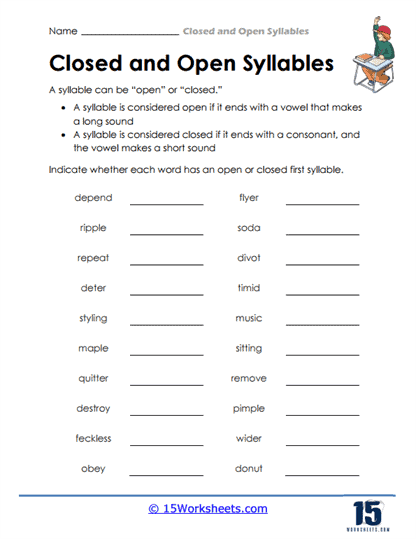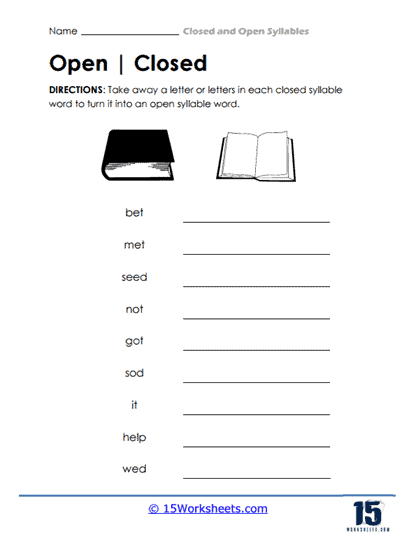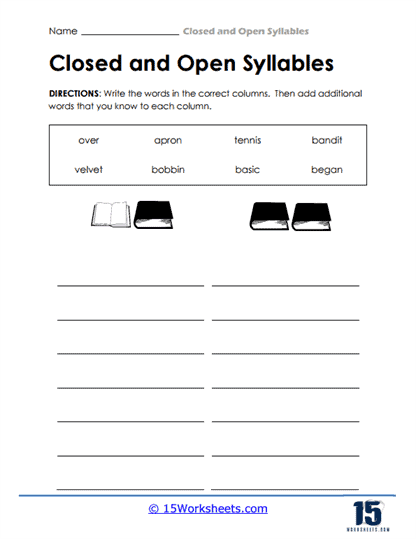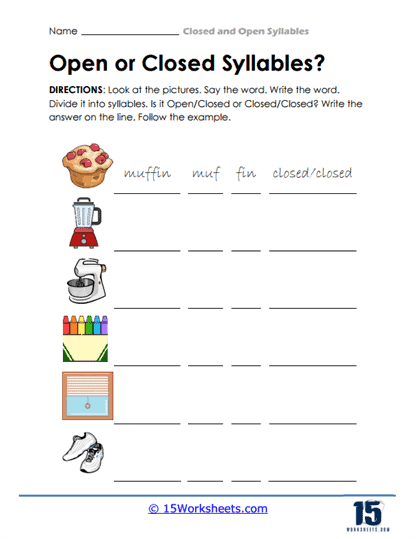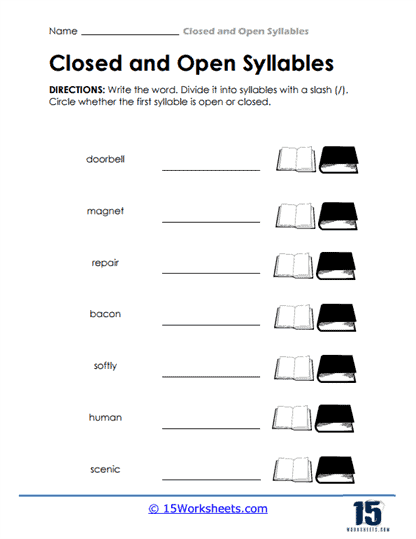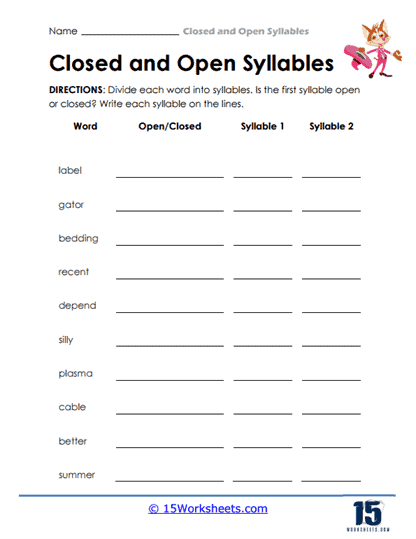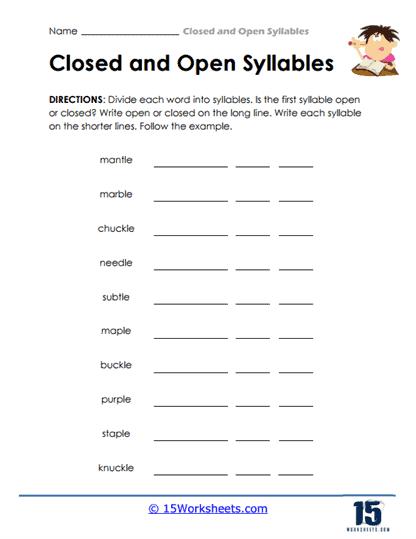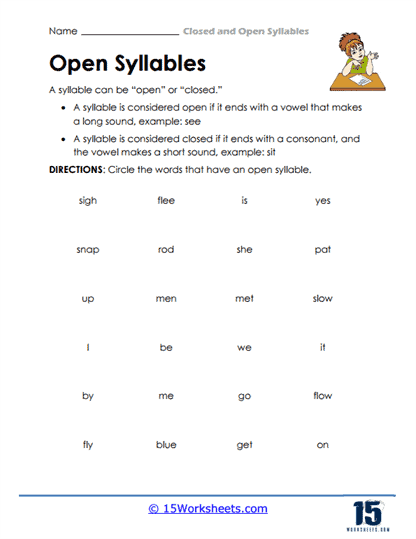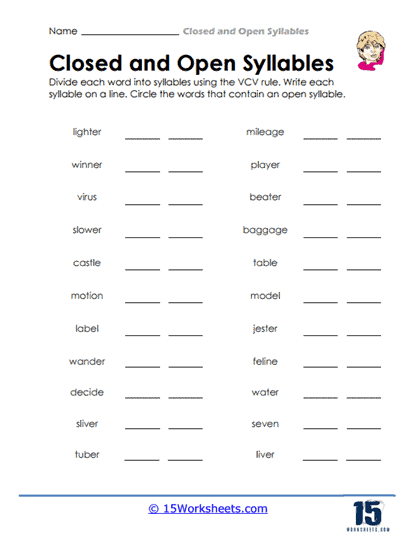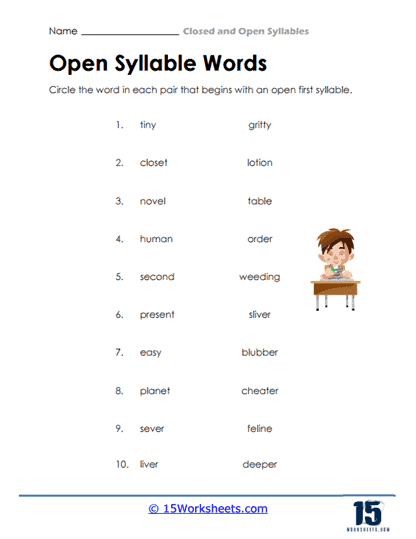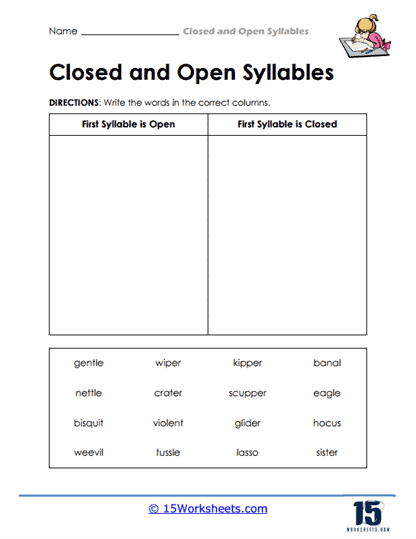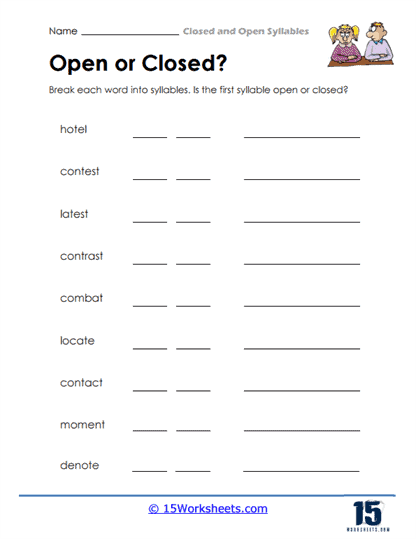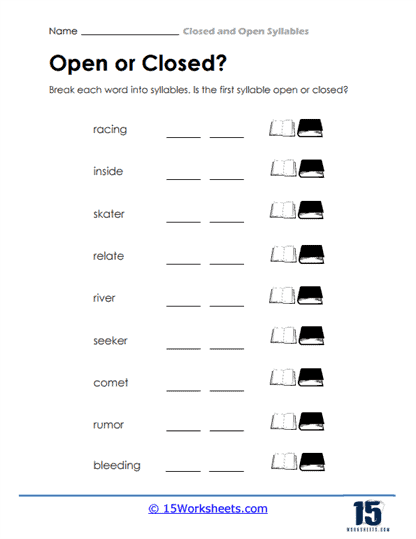Closed and Open Syllables Worksheets
All About These 15 Worksheets
This collection of Closed and Open Syllables worksheets is a comprehensive and engaging resource designed to help students develop a strong foundation in syllable recognition and pronunciation.
These worksheets are meticulously crafted to immerse students in the world of closed and open syllables, enabling them to understand, practice, and apply this vital linguistic skill effectively. Syllable recognition is fundamental to reading fluency, word decoding, and spelling accuracy, making this resource an invaluable tool for educators and young learners.
Imagine a word is like a little train. Each car (or part) of the train is called a syllable. Every syllable has at least one vowel sound (like a, e, i, o, u). Some words have just one syllable (like “cat”), while others have more (like “el-e-phant” which has three syllables).
What Are Open Syllables?
In an open syllable, the vowel says its long sound and there isn’t a consonant (like b, c, d) right after it. It’s like a door that’s open and allows the vowel to say its name. For example, in the word “go,” the “o” says its name and there isn’t a consonant right after it, so it’s an open syllable.
What Are Closed Syllables?
In a closed syllable, there’s a consonant right after the vowel. This “closes” the syllable, and the vowel usually makes its short sound. For example, in the word “cat,” the “a” is followed by the consonant “t.” So, it’s a closed syllable, and the “a” makes its short sound.
Types of Exercises on these Worksheets
Spot the Syllable – Here, you might see a list of words, and your job is to underline the syllables and label them as open or closed. For instance, for the word “ta-ble,” you’d underline “ta” as an open syllable and “ble” as a closed syllable.
Multiple Choice Questions – You’ll find a word or syllable and a few choices. Your job is to select whether it’s open or closed. It’s like a mini quiz!
Matching Games – On one side, you’ll have words split into syllables, and on the other side, labels saying ‘open’ or ‘closed’. Draw lines connecting each word to its type.
Syllable Sorting – Imagine having a big basket of words and needing to sort them into two bins – one for open and one for closed syllables. This exercise does just that but on paper.
Word Creation – You might get a set of syllables and be asked to create words, then identify if the syllables in your word are open or closed. It’s like playing with building blocks but for words.
Color Coding – Who doesn’t love coloring? In these exercises, you might color-code words or syllables based on whether they’re open or closed. Maybe blue for open and red for closed?
Group Discussions – Sometimes, worksheets encourage group activities. Discussing and working with friends can make spotting syllables even more exciting.
Closed and open syllables represent different sound patterns in words. Mastering these patterns helps learners segment words into individual syllables and blend syllables back into complete words. This process involves breaking down words into their constituent sounds and recognizing how they come together to form meaningful units.
Mastering closed and open syllables can significantly improve phonemic awareness, which is the ability to recognize, manipulate, and understand individual sounds (phonemes) in spoken language. Phonemic awareness is a foundational skill for learning to read and write, as it helps individuals connect sounds to letters and words.
The Importance of Closed and Open Syllables
Closed and open syllables are the building blocks of word structure in the English language. Understanding and recognizing these syllable types is important for several key reasons:
- Word Decoding: Closed and open syllables are prevalent in many words. Proficiency in recognizing and pronouncing these syllable types is crucial for decoding words accurately and improving reading fluency.
- Spelling Proficiency: Understanding closed and open syllables aids students in accurately representing sounds with letters in their writing, contributing to improved spelling skills.
- Vocabulary Growth: Proficiency in closed and open syllables enables students to learn and understand a broader range of words, enriching their vocabulary.
- Reading Comprehension: Recognizing syllable types enhances reading skills, allowing students to decode words quickly and accurately, which in turn leads to better comprehension of texts.
- Early Literacy Intervention: Identifying and addressing difficulties in syllable recognition and pronunciation early can prevent reading challenges and promote early literacy success.
Overall, these worksheets are invaluable resources that equip educators to guide their students toward phonics excellence. By engaging with these worksheets, students not only develop a strong foundation in closed and open syllables but also set the stage for successful reading, spelling, and overall literacy. This collection empowers educators to nurture young learners on their journey to becoming confident and proficient readers and communicators.


